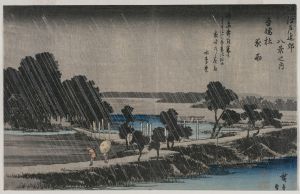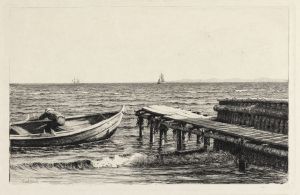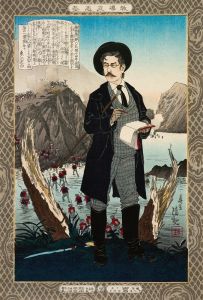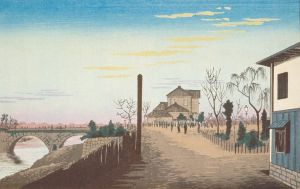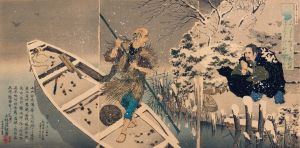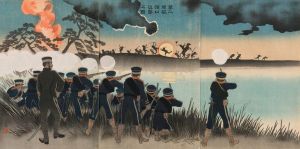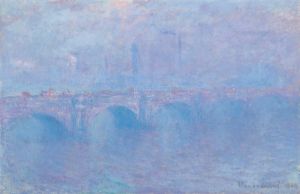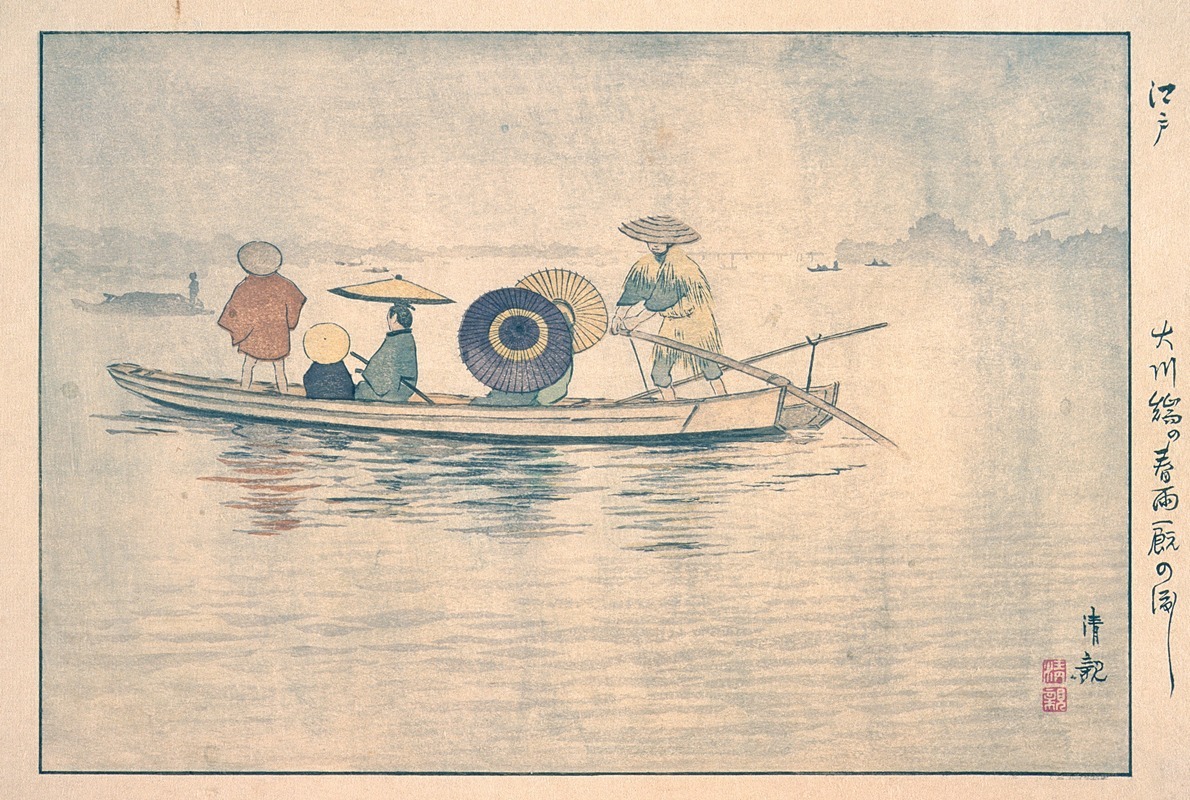
Spring Rain by the Ōkawa River Bridge; The Ferry near the Stables
A hand-painted replica of Kobayashi Kiyochika’s masterpiece Spring Rain by the Ōkawa River Bridge; The Ferry near the Stables, meticulously crafted by professional artists to capture the true essence of the original. Each piece is created with museum-quality canvas and rare mineral pigments, carefully painted by experienced artists with delicate brushstrokes and rich, layered colors to perfectly recreate the texture of the original artwork. Unlike machine-printed reproductions, this hand-painted version brings the painting to life, infused with the artist’s emotions and skill in every stroke. Whether for personal collection or home decoration, it instantly elevates the artistic atmosphere of any space.
"Spring Rain by the Ōkawa River Bridge; The Ferry near the Stables" is a woodblock print by the Japanese artist Kobayashi Kiyochika. Kiyochika, born in 1847 and active until his death in 1915, is renowned for his work during the Meiji period, a time of significant transformation in Japan as the country rapidly modernized and opened up to Western influences.
Kiyochika's work is often celebrated for its unique blend of traditional Japanese ukiyo-e techniques with Western perspectives and shading, reflecting the cultural and technological changes of his time. His prints frequently depict scenes of Tokyo (formerly Edo), capturing the city's transition from a feudal society to a modern metropolis.
"Spring Rain by the Ōkawa River Bridge; The Ferry near the Stables" is part of Kiyochika's series of prints that illustrate the landscapes and daily life of Tokyo. The Ōkawa River, now known as the Sumida River, has been a significant waterway in Tokyo, and the bridge depicted in the print is an important landmark. The scene captures the essence of a rainy day in spring, with the delicate depiction of rain and the serene atmosphere characteristic of Kiyochika's style.
The print showcases Kiyochika's skill in rendering atmospheric effects, a hallmark of his work. The use of light and shadow, along with the subtle gradations of color, creates a sense of depth and realism that was innovative for the time. This technique, known as kosen-ga, was influenced by Western art and photography, which Kiyochika studied and incorporated into his prints.
In the foreground, the ferry near the stables indicates the everyday activities of the people living by the river. Ferries were a common mode of transportation across the Sumida River, and the inclusion of this detail adds a layer of historical context to the print. The stables suggest the presence of horses, which were essential for transportation and labor during the Meiji period.
Kiyochika's work is often compared to that of Hiroshige and Hokusai, earlier masters of ukiyo-e, but his unique approach to capturing the changing urban landscape sets him apart. His prints are not just artistic representations but also historical documents that provide insight into the life and environment of Meiji-era Tokyo.
"Spring Rain by the Ōkawa River Bridge; The Ferry near the Stables" exemplifies Kiyochika's ability to blend traditional Japanese aesthetics with modern influences, creating works that are both visually stunning and historically significant. His prints remain highly regarded for their technical excellence and their evocative portrayal of a pivotal period in Japanese history.





